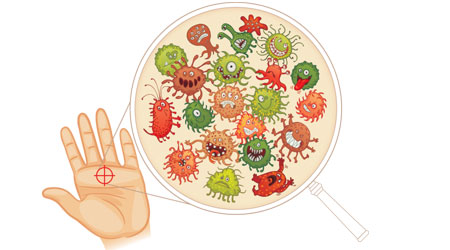
Teaching proper hand hygiene prevents the spread of cold and flu
Every year, cold and flu outbreaks result in hundreds of millions of missed school days for students. The problem often stems from presenteeism — when students come to school sick and spread germs via touch points.
Often times germs, bacteria and viruses are found on doorknobs, keyboards, desks and railings. The threat of infections lurk on every surface students touch, and on every door handle they open.
That is why it is important to know how to prevent their spread. For facility cleaning professionals, it also means knowing what tools — soap or sanitizer — to offer and where.
To answer the first question — when to use soap versus sanitizer — Darrel Hicks, an infection prevention consultant and author of “Infection Prevention For Dummies,” has a steadfast rule.
“Hand sanitizers are never a suitable replacement for washing your hands appropriately,” says Hicks. “I think we’ve gotten too hand sanitizer crazy. People are using it as a substitute for hand washing.”
For starters, by just using sanitizer, one is not removing the soil from hands. Soils can only be removed with soap, water and friction. Hicks pushes for removal over killing germs.
“My mantra is that when you remove the soil, with it goes the bad guys — the germs and bacteria and viruses,” he adds. “You can try to kill them, but science shows that those germs can repopulate pretty quickly. You never kill 100 percent of the germs when you’re using hand sanitizer.”
Jim Mann, the executive director and chief scientific officer for The Handwashing Leadership Forum, also believes in soap first and foremost.
He comments that cleaner hands reduces the risk of cross-contamination and goes a long way in creating healthier facilities. In fact, a strong hand hygiene program can reduce absenteeism by a fairly significant number.
Positioning Soap And Sanitizer

 Celebrating BSCAI's 60th Anniversary eBook
Celebrating BSCAI's 60th Anniversary eBook The Down and Dirty on Cleaning in Virus Season
The Down and Dirty on Cleaning in Virus Season How Surfactant Use is Expanding in Commercial Cleaning
How Surfactant Use is Expanding in Commercial Cleaning